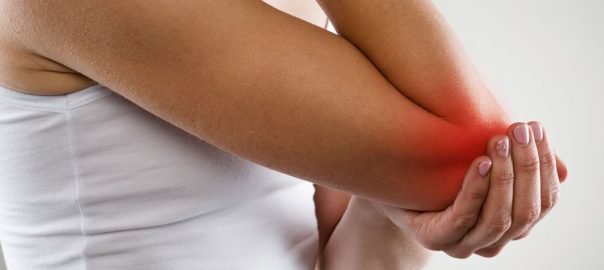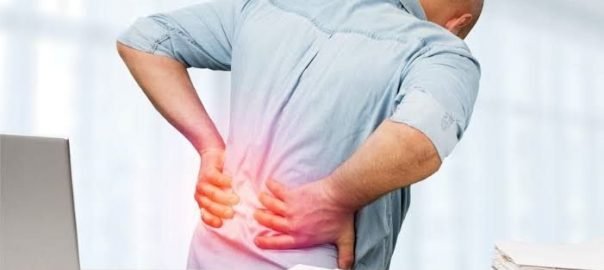Gout is a common and complex form of arthritis that causes intense pain, inflammation, and stiffness in the joints. In many cases, the disease affects the big toe (toes).
Episodes of the disease can occur quickly and return periodically, slowly damaging the tissues in the inflamed region.
In addition, gout has been linked to an increased incidence of cardiovascular and metabolic diseases. It is the most common form of inflammatory arthritis in men, but women can also be affected, especially after the onset of menopause.
Causes and risk factors
Normally, uric acid is dissolved in the blood and is excreted in the body through urine. If too much uric acid is produced or it is not eliminated properly, urate can form which can build up in the joints producing the clinical picture of gout.
Excess uric acid in the blood is called hyperuricemia and can be the result of eating foods rich in this substance, such as red meat and seafood.
The factors that increase the risk of developing gout are the following:
– Diet – consumption of meat, seafood, and drinks sweetened with fructose increase the chances of developing gout. It should be noted that alcoholic beverages, especially beer, can increase uric blood levels;
– Obesity – obese or overweight people should know that their body produces more uric acid, and the kidneys do not cope with this amount;
– Associated medical conditions – there are so-called diseases that increase the risk of gout, for example, untreated hypertension, diabetes, heart, and kidney disease;
– Certain medications – thiazide diuretics are used to treat high blood pressure. However, they increase the risk of gout. Even low-dose aspirin can have this effect;
– Family history – people with close relatives with gout have a higher risk of developing the disease;
– Age and sex – gout occurs more frequently in men. They are more likely to develop gout between the ages of 30 and 50.
However, after menopause, women’s uric acid levels approach those of men, so the risk becomes equal for both sexes;
– Lead exposure – chronic lead exposure has been associated with some cases of gout;
– Surgery or recent trauma – these changes in the body’s balance have been associated with an increased risk of a gout attack.
Clinical picture
Gout usually becomes symptomatic during the night, suddenly and without warning. The main symptoms are:
– Extremely severe joint pain – frequently affects the toe joint, but also the ankles, knees, elbows, and wrists. Any joint can be affected.
The pain is most severe in the first 4-12 hours, later reducing its intensity;
– Discomfort – after the pain disappears, the unpleasant sensations can persist for even a few weeks. It is possible that new painful episodes will occur, with longer durations and affecting a greater number of joints;
– Reduction of movement – as gout progresses, it is possible to have difficulties in the normal movement of the joints.
In severe cases, gout can lead to various complications, including kidney stones. Uric acid crystals can build up in the urinary tract causing this condition. Also, in advanced cases, gout can lead to the formation of gouty tufts.
They appear on the fingers, hands, feet, elbows, or ankles. Gouty tufts are usually not painful but can become inflamed during gout attacks.
Types
There are different stages through which gout progresses. These stages correspond to different types of gout and are represented by:
– Asymptomatic hyperuricemia – uric acid levels may be high, but no manifestations. At this stage, treatment is not necessary, although the crystals formed are stored in the tissues. People at this stage should avoid factors that contribute to the accumulation of uric acid;
– Acute gout – this stage occurs when uric acid crystals cause acute inflammation and intense pain. It normally disappears within 3 to 10 days. Attacks of this type can be triggered by stressful events, alcohol and drug use or even cold weather;
– Intercritical period – this period is asymptomatic and is located between two acute gout attacks. During this period, uric acid crystals are still stored in the tissues;
– Chronic gout to face – is the most serious form of gout and causes permanent damage to the joints and kidneys. At this stage, gouty tufts develop ie large accumulations of uric acid crystals.
It should be noted that it takes about 10 years to reach this stage. Gout treatment in Delhi offered from an early stage can stop the progression of the disease to this stage.
A condition easily confused with gout is chondrocalcinosis. It is also called pseudogout, and the symptoms are very similar. The major difference between these two conditions is the substances accumulated in the joints.
In the case of pseudogout, it is calcium phosphate, and in the case of gout uric acid crystals. Also, pseudogout requires a different treatment than gout.
Diagnostic
Gout is a condition that can be difficult to diagnose. Its symptoms may be similar to those of other diseases, and hyperuricemia is not always present. In addition, not all people with hyperuricemia develop gout, which is why blood tests are misleading.
Synovial fluid analysis is one of the most important investigations made to diagnose gout because it can highlight the presence of uric acid crystals in this fluid.
Because infections can cause gout-like symptoms, rheumatologist in Delhi also check for bacteria in your synovial fluid.
X-rays cannot detect gout but can be used to rule out other causes of joint inflammation. However, CT scans can help detect the presence of uric acid in the joints, even when symptoms are not present.
Computed tomography is not commonly used in clinical practice because it involves expense and irradiation. For this reason, ultrasound is used more often. And this method can detect uric acid crystals in the joints or tufts.
Treatment
Gout treatment in Delhi involves the administration of drugs. These are prescribed by the arthritis doctor in Delhi based on the patient’s health and help treat current symptoms and prevent future attacks. In addition, medications can reduce the risk of complications, such as gout.
To stop an acute gout attack, your arthritis specialist in Delhi may prescribe a higher dose of medication, and reduce the dose to be taken daily.
Non- steroidal anti-inflammatory drugs are frequently recommended. To reduce the pain caused by gout, colchicine may be prescribed. Its effectiveness is very good, but it also has side effects, such as nausea, vomiting, and diarrhea.
Corticosteroid medications can control inflammation and pain and can be given orally or injected into the joint.
However, these drugs are only given to people who cannot take either non-steroidal anti-inflammatory drugs or colchicine. Side effects of corticosteroids may include mood swings, high blood sugar, and high blood pressure.
To prevent complications, your joint pain specialist in Delhi may recommend the following medications:
– Xanthine oxidase inhibitors – have the effect of limiting the production of uric acid, so that its blood level decreases and the risks are reduced.
– Uricosuric drugs – have the effect of improving the ability of the kidneys to eliminate uric acid from the body, reducing the chances of gout. However, the level of uric acid in the urine becomes increased.
Lifestyle and diet can be changed to reduce the chances of gout. Thus, best rheumatologist in Delhi recommends that alcohol be avoided and water be consumed in quantities of about 2-3 liters per day.
Also, bodyweight should be kept within normal limits, and foods high in purines should be avoided. Some of these forbidden foods are: asparagus, brain, red meat, dried beans, peas, mushrooms, liver, and seafood.




